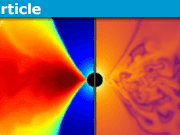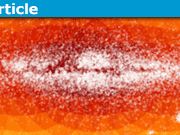A Formal Definition of Large-Scale Isotropy
This Insight is part of my attempt to develop a formal definition of ‘large-scale isotropy’, a concept that is fundamental to most cosmology, but that is nowhere that I have seen properly defined.
The definitions of isotropy are as precise as one could wish, but the ‘large-scale’ bit is in every case I have seen just a hand-wave. It turns out that it’s quite messy to try to make that ‘large-scale’ notion precise.
I made a thread on it, which is here.
It is possible that everything below is in that thread, in more up-to-date and better versions. But I am not sure, and as I don’t have time to check before the blogs are deleted, I’m posting the material below just in case.
If you’re interested in this topic, I’d suggest going to the linked thread first, and then only coming back to this post if there are links in the thread to it.
First, define ##\Sigma_t## as the hypersurface of constant time t in the foliation.
##d(t,P,Q)## is the length of the shortest path in ##\Sigma_t## from point ##P## to point ##Q##, both of which are in ##\Sigma_t##. The length of path is of course determined by integration using the metric tensor.
##S(t,P,r)## is the ‘spherical’ set of all points ##Q\in \Sigma_t## such that ##d(t,P,Q)<r##.
Let ##L(t,P,r)=\frac{\int_{S(t,P,r)}T^{00}dV}{ \int_{S(t,P,r)}dV}## where ##dV## is the volume element in ##\Sigma_t##.
##L(t,P,r)## is the average mass-energy density in the ‘sphere’ ##S(t,P,r)##. As discussed above (in the first part of post #11), this is well-defined because ##T^{00}## is fully determined by the foliation, and invariant to the choice of spatial coordinate system.
After thinking about it a bit, I feel it may be that a spacetime whose CTHs are perfectly homogeneous must also be perfectly isotropic. If anybody can think of a counter-example, I would be very interested to hear of it.
However, that is not the case for large-scale homogeneity and large-scale isotropy.
Let us construct a hypothetical spacetime that is large-scale homogeneous but not large-scale isotropic. We’ll call it AltI. It’s like AltH (another hypothetical spacetime I defined in a discussion on this forum) except that all slabs have the same width ##a(t)##. That is:
##T^{00}(t,x,y,z) = \rho## if ##int(\frac{x}{a(t)})\ ##mod##\ 2 = 0##, otherwise ##0##.
Consider the point ##P=(t,\frac{3a(t)}{2},0,0)\in \Sigma_t##. This is in the middle of an ’empty slab’. A straight line through ##P## parallel to the ##y## axis will have ##T^{00}=0## (zero mass-energy density) all the way along its infinite length, because it remains in the same empty slab all the way. However, a straight line through ##P## parallel to the ##x## axis will have ##average(T^{00})=\frac{\rho}{2}##, because it passes through an infinite number of empty and non-empty slabs. So ##\Sigma_t## is not isotropic at any scale because the average densities along the directions of the ##x## and ##y## axes are different at ##P##, no matter how far we pursue those directions.
But the CTHs of AltI meet the definition of large-scale homogeneity because all slabs are the same width, so the average density in a large enough sphere will approach ##\frac{\rho}{2}##. So AltI is large-scale homogeneous but we would not wish to say it is large-scale isotropic.
Here is a definition of large-scale isotropy that will exclude AltI, and any other spacetime I can think of that we would wish to exclude.
Let ##\gamma_{\vec{v}}:[0,\infty)\rightarrow \Sigma_t## be the unique spatial geodesic (meaning a geodesic of the sub-manifold ##\Sigma_t##, not a geodesic of ##M##) through ##P## with initial velocity ##\vec{v}## at ##P##.
Define ##\mu:[0,\infty) \rightarrow R## by ##\mu(s) = \sqrt{g_{ij}(\dot{\gamma}_\vec{v})^i(\dot{\gamma}_\vec{v})^j}|_{\gamma_\vec{v}(s)}##
then define ##K(t,P,\vec{v},r)=\frac{\int_0^r T^{00}(\gamma(s))\mu(s)ds}{\int_0^r\mu(s)ds}##. This is the average density along the spatial geodesic from ##P## to ##\gamma(r)##.
Then we say that ##\Sigma_t## is “large-scale isotropic” iff ##\exists \rho\geq 0## such that, for every ##\epsilon>0## there exists ##R_\epsilon>0## such that, for every ##P\in \Sigma_t## and every ##\vec{v}\in T_PM## orthogonal to ##\vec{\xi}## (recall that ##\vec{\xi}## is the time-like vector field that determines the foliation), ##r\geq R_\epsilon\Rightarrow |K(t,P,\vec{v},r)-\rho|<\epsilon##.
That is, for any point ##P## in ##\Sigma_t##, the average density along a geodesic curve of ##\Sigma_t## in any direction away from ##P## approaches a limit of ##\rho## as the curve length increases, and a uniform lower bound on the rate of convergence can be achieved for all points in ##\Sigma_t##.
Then we say that ##\Sigma_t## is “large-scale homogeneous and isotropic” iff ##\exists \rho\geq 0## such that, for every ##\epsilon>0## there exists ##R_\epsilon>0## such that, for every ##P\in \Sigma_t, r\geq R_\epsilon## and every ##\vec{v}\in T_PM## orthogonal to ##\vec{\xi}## (recall that ##\vec{\xi}## is the time-like vector field that determines the foliation), we have ##|L(t,P,r)-\rho| <\epsilon## and ##|K(t,P,\vec{v},r)-\rho|<\epsilon##.
V.457.
- Degree in
- Bachelor: Science and Maths; PostGrad: Actuarial
- Favorite Area of Science
- Mathematics; Physics; Genetics










A concrete example of above: The Schwarzschild interior foliated by hypersurfaces of constant r. These are pure spacelike surfaces, with r being timelike. Each of these surfaces is homogeneous in metric, but has the S2XR1 topology, with the R1 direction being a spacelike killing vector.
Thanks for the comment PAllen. Just thinking about the Schwarzschild idea, in a homogeneous spacetime, wouldn’t the preferred direction be dependent on the choice of coordinate system, because it would point to or away from the system’s origin, which is arbitrarily chosen? I have only seen Schwarzschild coordinates used in relation to spherical bodies occupying less than the entire spacetime, in which case the origin is not chosen arbitrarily, because it is the centre of mass of the body.
I think the isotropy requirement of the cosmological assumption is that there is no preferred, coordinate-independent direction, although that second requirement is unstated.
I’m a little rusty on Schwarzschild at the moment, so it’s entirely possible I’m writing through my hat.
Isotropy and homogeneity, in general, are only ‘manifest’ in appropriate coordinates. Take the simple case of Minkowski spacetime. It is isotropic everywhere, homogeneous everywhere, spherically symmetric about every point, yet Rindler coordinates produce a metric with an apparent preferred direction. In terms of coordinates, the way to look at it is that if there are some coordinates that show homogeneity, then manifold is said to be homogeneous. There are more modern, coordinate independent approaches, but IMO, there is nothing wrong with the oldeer approach of ‘if there exist coordinates with property X, we say the manifold has property X’.
In the case of Schwarzschild interior, there exists a foliation where each hypersurface is everywhere homegeneous, but each hypersurface has a distinguished direction (orthgogonal to directions where geodesics are closed).
The correct relation of isotropy and homeneity is that isotropy everywhere implies homegeneity, but homegeneity does NOT imply isotropy.
a counterexampe to conjecture that exact homegeneity implies isotropy:
Consider that each CTH is topologically an S2XR1 manifold. Then there is a preferred direction despite everywhere exact homegeneity.